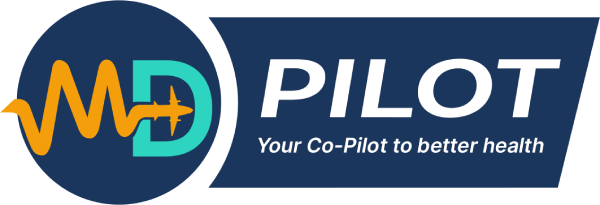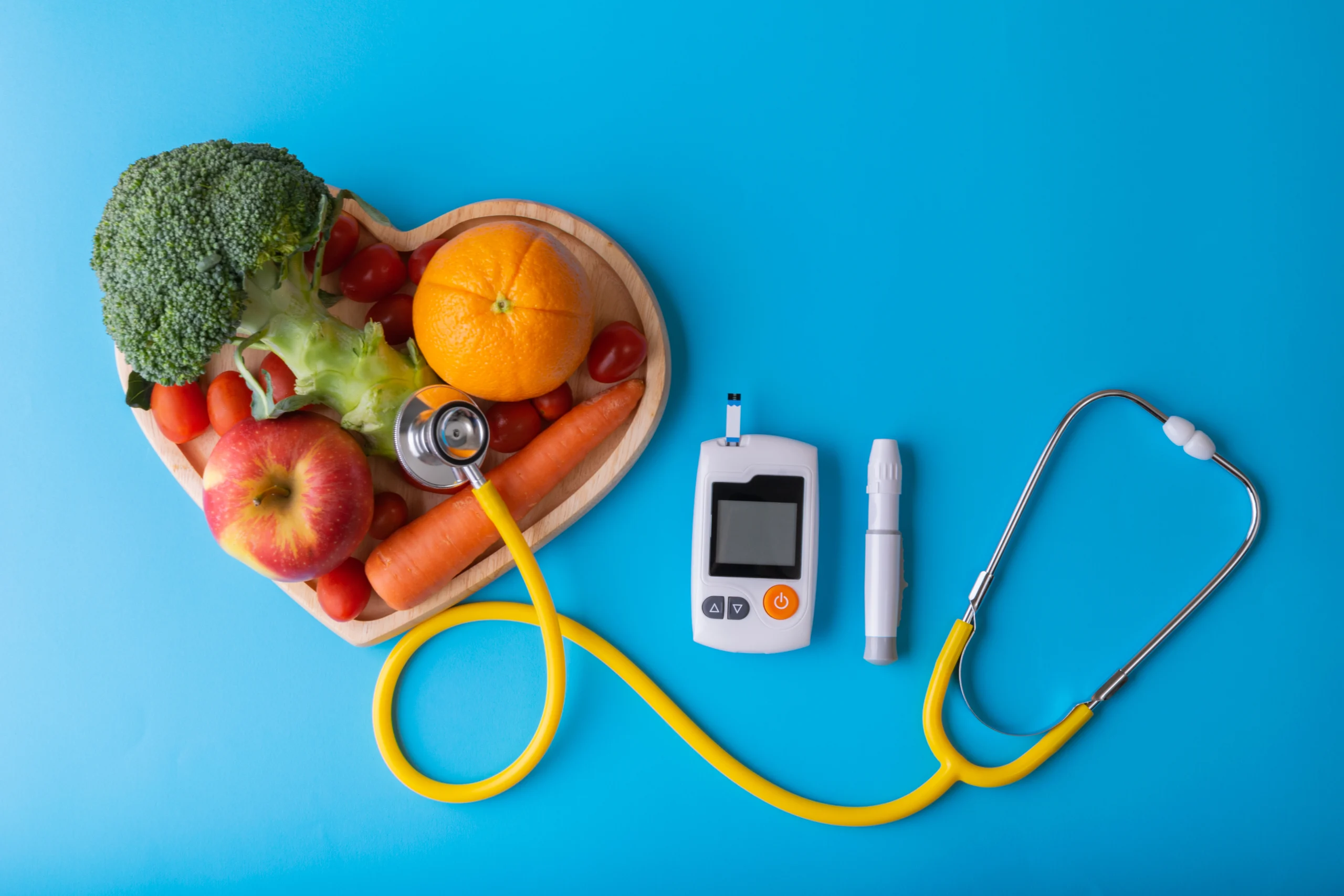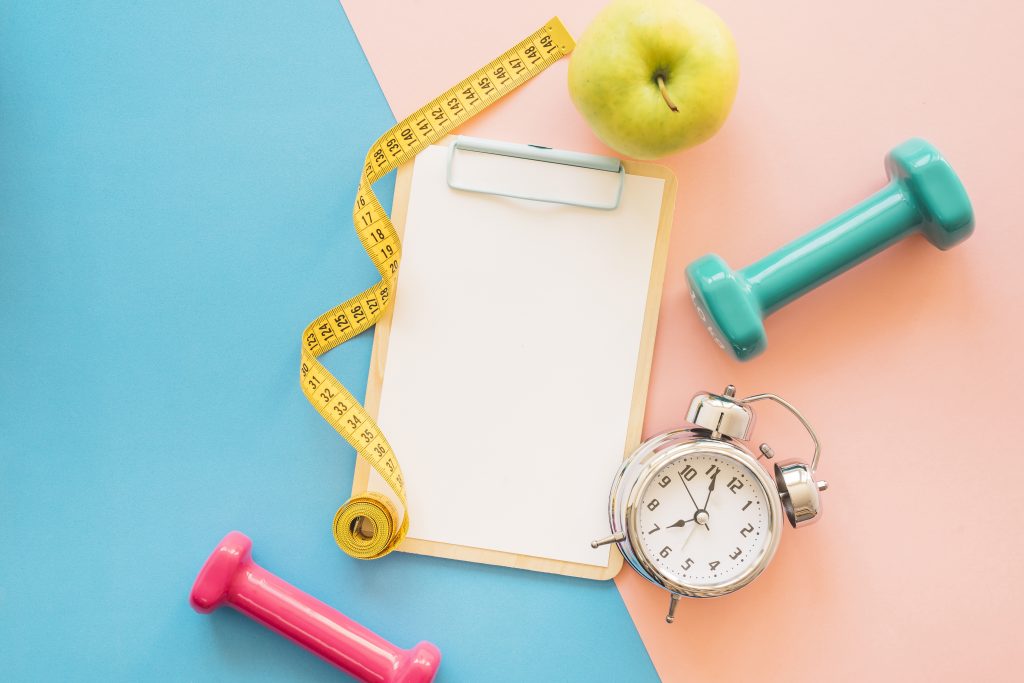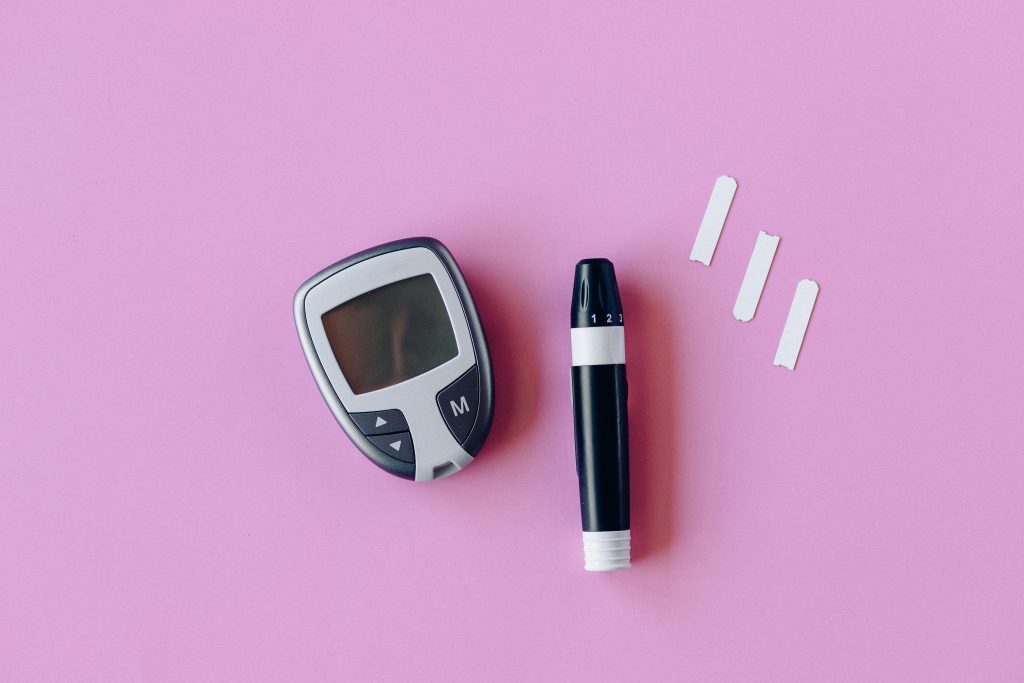Table Of Contents
-
Key Takeaways:
- Recognizing Hypoglycemia Before It Becomes Dangerous
-
Step-by-Step: Using the Rule of 15
-
Common Mistakes to Avoid
-
When to Seek Medical Attention
-
Prevention & Preparedness
-
Continuous Glucose Monitoring: Smarter Tools for Safer Lows
-
Frequently Asked Questions (FAQs)
-
Take Charge of Your Low Blood Sugar
-
List of References:
A sudden wave of dizziness. Shaky hands. Blurred vision. These aren’t random symptoms — they’re warning signs that your blood sugar levels may have dropped too low. Hypoglycemia can escalate quickly, disrupting your ability to think clearly and, if left untreated, leading to seizures or unconsciousness.
That’s why the rule of 15 hypoglycemia method is so important. This simple approach — taking 15 grams of fast acting carbs, waiting 15 minutes, and then checking your blood glucose — gives you a reliable way to regain control without overcorrecting.
But recovery seldom looks the same. Responses vary from person to person, depending on activity, medication, and even the timing of your last meal. This guide explains how to recognize signs of low blood, apply the 15-15 rule effectively, and prepare for future episodes with confidence.
Key Takeaways:
- Hypoglycemia means blood sugar below 70 mg/dL. Severe lows around 55 mg/dL can cause confusion, seizures, or unconsciousness if untreated.
- The rule of 15 hypoglycemia method provides safe, step-by-step treatment: 15 grams of fast acting carbs, wait 15 minutes, then check your blood glucose again.
- Good quick treatments include glucose tablets, glucose gel, juice, regular soda, or a tablespoon of sugar honey. Avoid foods high in fat or protein.
- Common mistakes include skipping the test, eating too much at once, and forgetting to recheck. Tracking patterns helps prevent recurring episodes.
- Seek medical attention for severe symptoms, readings below 54 mg/dL, persistent lows, or if you cannot self-treat.
- Prevention matters: eat on schedule, carry quick carbs, monitor often, and train others to recognize signs of low blood sugar.
- Responses differ person to person, so logging your symptoms and numbers helps you and your provider tailor your plan.
Recognizing Hypoglycemia Before It Becomes Dangerous
Hypoglycemia begins when blood sugar levels fall under 70 mg/dL. At this point, the body signals distress with early signs and symptoms like shakiness, sweating, sudden hunger, or irritability.
More severe complications emerge as these levels dip further to 55 mg/dL. Confusion, blurred vision, slurred speech, seizures, or unconsciousness can occur at this point because the brain depends on glucose as its primary fuel.
Acting quickly makes the difference. The rule of 15 hypoglycemia method helps you treat low blood sugar safely by using fast acting carbs such as glucose tablets, glucose gel, a tablespoon of sugar honey, or four ounces of juice or regular soda. Keeping these on hand ensures you can respond before lows become dangerous.
Understanding Blood Sugar Ranges
Knowing your blood sugar levels at different times of the day helps you identify when values are too low and when the 15-15 rule should be applied. While goals may differ by age, health, and treatment plan, the CDC (2025) outlines the following general targets:
| Time of Check | Normal Range | Prediabetes | Diabetes |
|---|---|---|---|
| Fasting (8+ hours) | 70-99 mg/dL | 100-125 mg/dL | 126+ mg/dL |
| Before meals | 70-130 mg/dL | N/A | 80-130 mg/dL |
| 2 hours after meals | < 140 mg/dL | 140-199 mg/dL | < 180 mg/dL |
| Bedtime | 90-150 mg/dL | N/A | 110-150 mg/dL |
 Key takeaway:
Key takeaway:
Any value below 70 mg/dL requires immediate treatment. Applying the hypoglycemia rule of 15 helps restore stability and prevent further blood sugar drops.
Step-by-Step: Using the Rule of 15
The 15-15 rule is the cornerstone of hypoglycemia treatment. It offers a clear, structured process that restores blood sugar levels without overshooting your target range.
1. Check Your Blood Glucose
Confirm your blood glucose level with a meter whenever possible. If you cannot test but have unmistakable signs of low blood sugar, treat immediately.
2. Take 15 grams Of Fast Acting Carbs
Choose one of the following options:
- 3–4 glucose tablets
- 1 tube of glucose gel
- 4 ounces of juice or regular soda
- 1 tablespoon of sugar honey mixed in water
3. Wait 15 minutes
Allow your body time to absorb the sugar. Resist the urge to keep eating during this period.
4. Recheck Your Blood Sugar
If still under 70 mg/dL, repeat the process.
5. Return To Stability
Once back in your target range, eat a balanced snack with protein and complex carbs if your next meal is more than an hour away.
Blood Sugar Thresholds and Recommended Actions
| Blood Sugar Level | Common Symptoms | Recommended Action (Rule of 15) |
|---|---|---|
| Below 70 mg/dL | Shakiness, sweating, hunger | Take 15 grams of carbs, then recheck in 15 minutes |
| Around 55 mg/dL | Confusion, blurred vision | Treat low blood sugar immediately, repeat until safe |
| Target 70–100 mg/dL | Normal range | Continue monitoring and record results |
Common Mistakes to Avoid
Even with the rule of 15 hypoglycemia method, errors can delay recovery or push your blood sugar levels outside the safe target range. Avoid these common pitfalls:
1. Skipping The Test
Always check your blood glucose first. Symptoms can overlap with anxiety or dehydration, and treating unnecessarily leads to misleading records.
2. Overcorrecting
Consuming more than 15 grams of carbs at once often causes a rebound above your target range. Follow the guideline, then retest.
3. Choosing The Wrong Foods
Snacks high in fat or protein, like peanut butter or cheese, slow absorption. Use fast acting carbs such as glucose tablets, juice, or regular soda.
4. Forgetting To Recheck
Failing to wait 15 minutes and retest may leave a blood sugar drop untreated.
5. Ignoring Patterns
Recurring lows often point to issues with medication, meals, or activity. Record and share them with your healthcare provider.
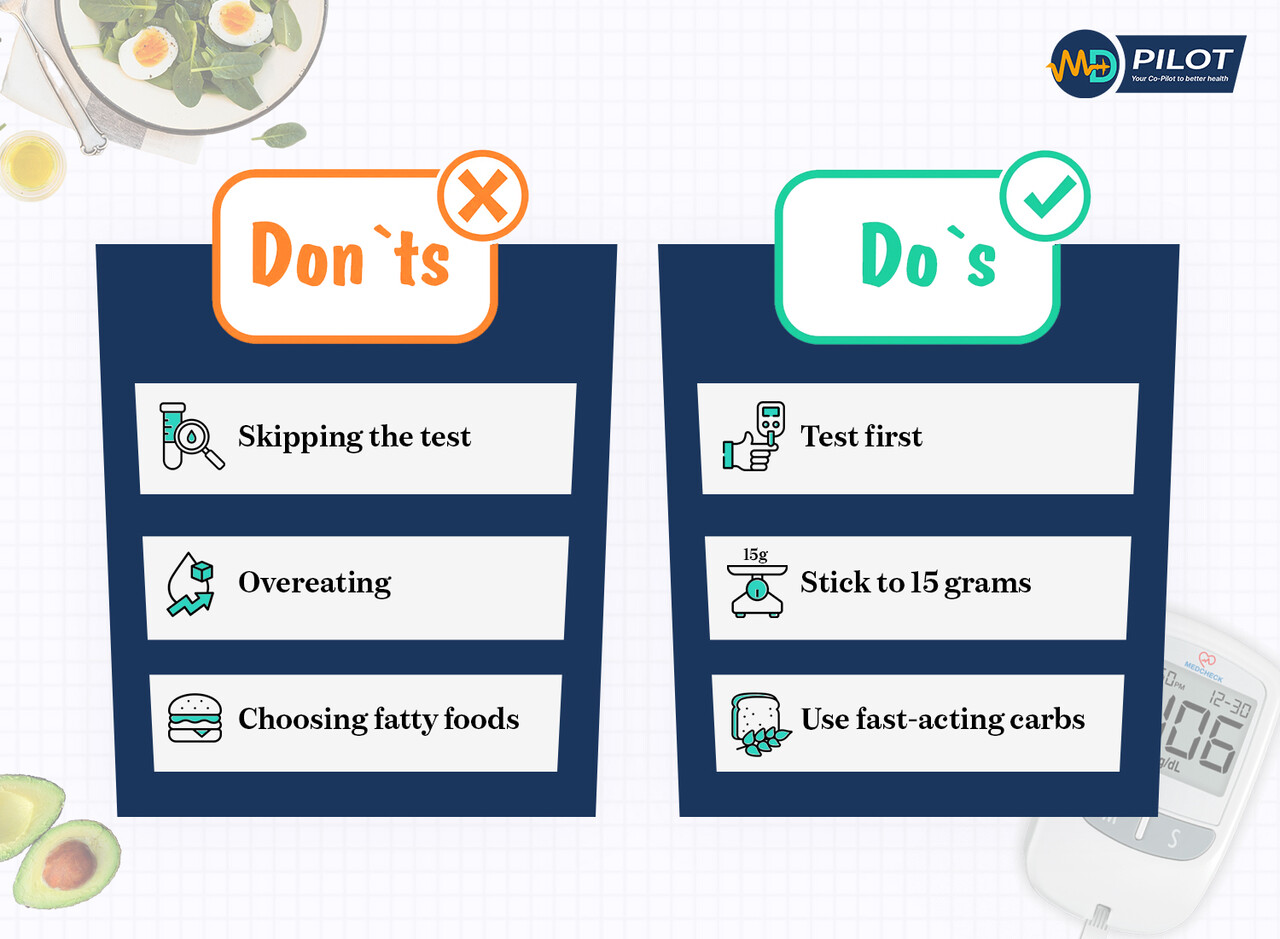
When to Seek Medical Attention
Most episodes of hypoglycemia can be managed with the rule of 15 hypoglycemia method. However, there are situations when immediate professional care is essential:
1. Severe Symptoms
If you experience confusion, seizures, or loss of consciousness, this is severe hypoglycemia and requires urgent treatment, often with glucagon. Call emergency services.
2. Very Low Readings
Blood glucose values below 54 mg/dL require prompt action and may not resolve with a single round of the 15-15 rule.
3. Persistent Lows
If blood sugar levels remain under 70 mg/dL after repeating treatment twice, seek medical help immediately.
4. Inability To Self-treat
If you cannot safely swallow, or cannot check your blood glucose while experiencing symptoms, emergency assistance is needed.
5. Recurring Episodes
Frequent lows or blood sugar drops without clear triggers should be discussed with your provider. Your medication or meal plan may need adjustment.
 Tip:
Tip:
If you are at risk for severe hypoglycemia, keep ready-to-use glucagon (nasal spray or injection) available and train family or coworkers on how to administer it.
Prevention & Preparedness
The best way to handle hypoglycemia is to reduce the likelihood of it happening in the first place. Building habits around prevention keeps your blood sugar levels more stable and minimizes the need for emergency treatment.
1. Plan Meals & Snacks
Eating at consistent times helps prevent sudden blood sugar drops. Include balanced portions of protein, fiber, and complex carbs.
2. Carry Fast Acting Carbs
Always keep glucose tablets, glucose gel, or small servings of juice or regular soda with you. These should be your first choice when lows occur.
3. Check Your Blood Glucose Regularly
Frequent testing helps you spot patterns and take action early. If you experience repeated lows, adjust with your healthcare provider.
4. Be Mindful Of Activity
Exercise increases your risk of hypoglycemia. Carry quick carb options and check your glucose levels before, during, and after physical activity.
5. Review Medications
Insulin or certain oral drugs may increase the risk of lows. Routine medical check-ins allow for dose adjustments if signs and symptoms occur often.
6. Prepare Others
Family, friends, and coworkers should know how to recognize signs of low blood sugar and respond, including using glucagon in emergencies.
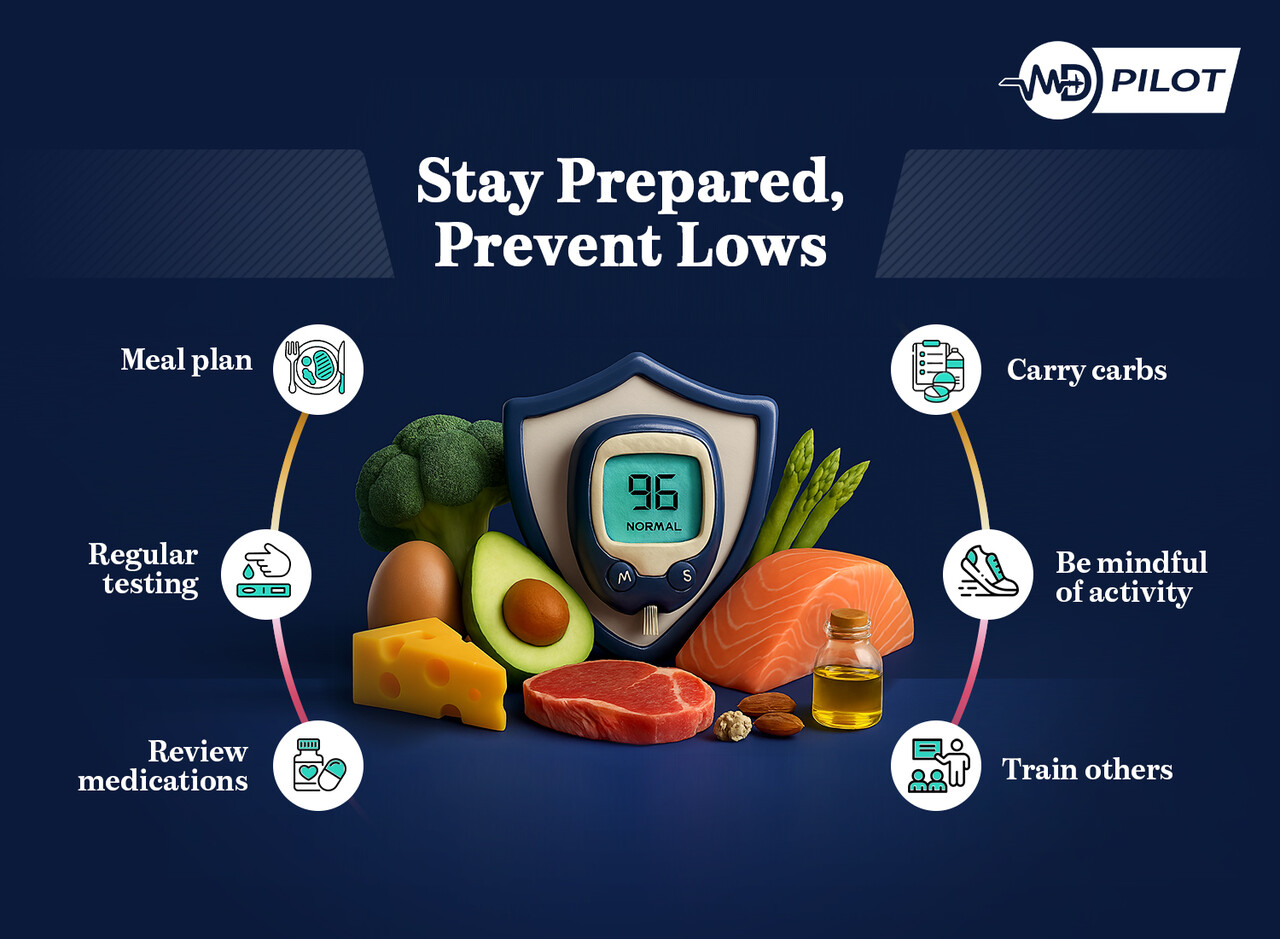
Continuous Glucose Monitoring: Smarter Tools for Safer Lows
The rule of 15 hypoglycemia method gives you a reliable way to correct lows, but technology can now help you spot trouble before symptoms begin. Continuous Glucose Monitoring (CGM) devices track glucose every few minutes through a sensor worn just under the skin. The data is sent directly to your phone, watch, or receiver, giving you a clearer picture of how your body is responding in real time.
How CGM Improves Hypoglycemia Management
1. Trends, not snapshots
Instead of isolated fingerstick numbers, CGM shows whether your glucose levels are steady, rising, or dropping.
2. Predictive alerts
Alarms warn you before your blood sugar drops, often allowing you to act before symptoms hit.
3. Less guesswork
Because CGM reduces the need for repeated fingersticks, you can focus on the right moment to check your blood and apply the 15-15 rule when necessary.
4. Actionable patterns
Data helps you identify whether lows happen overnight, after workouts, or between meals, making prevention strategies more targeted.
5. Family connection
Many systems allow loved ones to monitor your numbers remotely, providing reassurance in case you don’t notice signs of low blood yourself.
CGM doesn’t replace the 15-15 rule — you’ll still need fast acting carbs like glucose tablets or juice when treating a low. But it puts you in a stronger position: instead of reacting to an emergency, you’re anticipating and preventing one.
CGM Comparison Table
| CGM System | Wear Time | Warm-up Period | Key Features |
|---|---|---|---|
| Dexcom G7 | 10 days | 30 minutes | Direct to smartphone, predictive alerts |
| FreeStyle Libre 3 | 14 days | 1 hour | Smallest sensor, real-time readings |
| Medtronic Guardian 4 | 7 days | 2 hours | Integrates with insulin pumps |
| Eversense E3 | 180 days | 24 hours | Implantable, long-term wear, vibration alerts |
 Tip:
Tip:
CGMs don’t replace the rule of 15 hypoglycemia method. They help you act faster and apply it more effectively when needed.
Frequently Asked Questions (FAQs)
Managing hypoglycemia goes beyond the basics of the rule of 15 hypoglycemia method. Readers often wonder about special situations, hidden triggers, and long-term safety. These questions and answers provide practical insights that address real-life concerns.
Yes. Caffeine may temporarily mask certain signs and symptoms of hypoglycemia, like fatigue or drowsiness, making it harder to recognize lows. Alcohol complicates treatment because it can suppress glucose release from the liver, leading to delayed or prolonged blood sugar drops. If you consume alcohol, always pair it with food and monitor your glucose levels closely.
The rule of 15 hypoglycemia method applies to both children and adults, but portion sizes may need adjusting based on age and body size. Pediatric specialists sometimes recommend smaller carb doses (for example, 10 grams of carbs for younger children) before retesting. Always consult your child’s healthcare provider for specific guidance tailored to their needs.
Hypoglycemia unawareness occurs when you no longer feel early signs and symptoms of lows. This is dangerous because you may only notice when blood sugar levels are already severely low. If this happens, frequent monitoring, CGMs, and working with your provider on medication adjustments are essential. In some cases, avoiding hypoglycemia for a period of time can help restore awareness.
Yes. Intense or prolonged activity uses stored glucose, which can cause blood sugar drops even several hours afterward. This is called “delayed hypoglycemia.” Checking your blood glucose before and after exercise, and sometimes before bed after a late workout, can help prevent overnight lows. Keeping a small snack with protein and carbs post-exercise can also reduce the risk.
Take Charge of Your Low Blood Sugar
Low blood sugar can feel unpredictable, but having a plan transforms it from something alarming into something manageable. The rule of 15 hypoglycemia method gives you a clear framework: act quickly, treat effectively, and restore your blood sugar levels with confidence.
Paired with prevention strategies and modern tools like CGM, it helps you not only respond to lows but also reduce how often they happen.
If you found this guide helpful, explore our related resources on blood sugar monitoring and meal planning for diabetes. You can also sign up for our Weekly Health Intel to receive clear, research-based insights delivered straight to your inbox. The more you understand your numbers, the more prepared you are to take charge of your health every day.
Until next time, take care!
List of References:
- https://diabetesjournals.org/care/article/48/Supplement_1/S128/157561/6-Glycemic-Goals-and-Hypoglycemia-Standards-of
- https://diabetes.org/living-with-diabetes/hypoglycemia-low-blood-glucose
- https://www.mayoclinic.org/diseases-conditions/hypoglycemia/diagnosis-treatment/drc-20373689
- https://www.cdc.gov/diabetes/treatment/treatment-low-blood-sugar-hypoglycemia.html
- https://pubmed.ncbi.nlm.nih.gov/36635028/
Disclaimer:
The information provided on MD-Pilot is for educational and informational purposes only. It is not intended as a substitute for professional medical advice, diagnosis, or treatment. Always seek the advice of your physician or other qualified healthcare provider with any questions you may have regarding a medical condition. Never disregard professional medical advice or delay in seeking it because of something you have read on this website.
Recomended Articles
View AllWeekly Health Intel
Get evidence-based health tips, latest research, and exclusive guides delivered weekly
